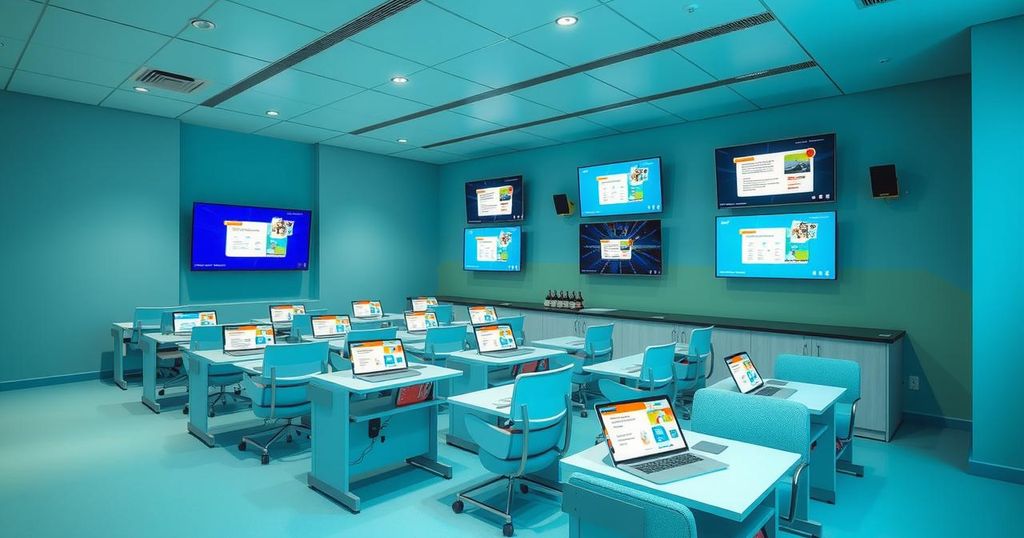Artificial Intelligence in Education: Navigating the Promise and Peril
The integration of Artificial Intelligence (AI) in education promises enhanced learning and personalized support for teachers and students. However, concerns arise over dependency, reduced creativity, and potential bias, leading to disparities in educational access. Responsible implementation is crucial to ensure fairness and retain critical thinking skills among students.
In the dynamic landscape of the 21st century, advancements in science and technology have woven themselves into the fabric of our daily lives. Tools like Google Maps and Google Drive have become indispensable, guiding us through our fast-paced existence with ease. The Fourth Industrial Revolution (4IR) has highlighted the necessity of integrating technology in every aspect of life, paving the way for smarter solutions to modern-day challenges. As learning continues to evolve, Artificial Intelligence (AI) emerges as a revolutionary force, transforming education and empowering teachers with resources to enhance their pedagogical practices. Teachers can now utilize AI tools such as ChatGPT and DeepSeek to provide students with immediate, tailored support, enriching the educational experience.
AI has ushered in a new era of interacting with learning technologies, making them intuitive and rapid. Educators can now generate lesson plans and assessment tools effortlessly, offering students a personalized educational journey. This technology allows for self-paced learning, with resources accessible at any time, fostering immediate feedback and interaction. Additionally, AI helps teachers analyze student performance, identify gaps in understanding, and adjust curriculum accordingly, enabling a more responsive educational environment. Innovations such as speech recognition features ensure that learning is more inclusive, allowing students with disabilities to engage meaningfully. Language translation technology also breaks down barriers, promoting collaboration among diverse student groups in a globalized learning landscape.
However, while the advantages of AI in education are substantial, there are potential downsides to consider. Over-reliance on technology may stifle creativity and critical thinking skills. When students depend heavily on AI, their problem-solving abilities can diminish, shifting their focus from independent exploration to instant gratification. This reliance also raises concerns over procrastination, as easy access to answers can discourage deeper engagement with learning materials. Consequently, students may find themselves distracted, favoring social media over meaningful participation in their education.
Furthermore, the manner in which students engage with reading has changed. The rise of audiobooks and AI-generated content has supplanted the traditional practice of deep reading and diligent research. While technology enhances accessibility, it simultaneously shortens attention spans and hampers comprehension, leading to a reliance on superficial summaries rather than in-depth understanding. This shift necessitates further research into AI’s long-term effects on literacy skills and independent thought.
AI’s fairness is inherently tied to the data it processes. Biased training data can result in inequitable assessments, disproportionately affecting certain groups of students. Moreover, not all learners have equal access to AI tools, potentially widening the educational divide between privileged and underprivileged populations. Concerns regarding data privacy, ethical use, and the impact of bias highlight the need for vigilance in AI integration within education.
Ultimately, AI’s role in education is a double-edged sword, offering immense potential while presenting significant challenges. Its efficacy hinges on the deliberate choices made by educators, parents, and policymakers. By emphasizing responsible implementation and oversight, we can mitigate the risks associated with AI in education, ensuring that it serves as a tool for empowerment rather than dependency.
The integration of AI into education holds both promise and peril. While it enhances accessibility, personalization, and efficiency, it also presents risks of dependency, biased assessments, and diminished critical thinking. Responsible use of AI, guided by educators and stakeholders, is critical to maximize its benefits while safeguarding students’ creativity and independence. The future of education will depend on striking a balance between harnessing AI’s potential and addressing its challenges.
Original Source: www.nation.com.pk




Post Comment